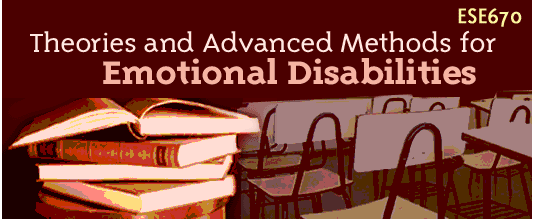
 |
|||||
| |
|
|
|
|
|
For this assignment, you will need that social history you just completed and all the materials you gathered. Based on that information, you will develop a diagnosis for the student. You will list each of the axes – all five – and include your estimate of GAF number.
This is just an exercise, so spend a few minutes thinking about what it means to give a youngster a label. Remember your pledge to keep information confidential. This is about a real student, but it should not go into your files or the permanent records.
Instead, your confidence should be building with respect to understanding the psycho-educational evaluations you receive, and you can be more knowledgeable as you interpret them for yourself, other teachers and the parents. You may also be able to recognize when they are adequate, pinpoint a child well, or miss some of the details. After all, you gain insights in day-to-day work with your student that are not possible in a half-day session with a psychometrist.
. . . and that leads to the last reminder. Some people are more adept than others at getting to the heart of issues. No matter how sophisticated and gifted a diagnostician, the time spent with a child is little more than a snap-shot of a few moments, and the background that comes with the picture is a tiny piece of the environment. It is impossible to draw satisfactory conclusions from such a snippet of life. Instead, we gain a direction, a chance to get further involved, to care more, to work to get to know the child and the family a little better.
Remember that the family spends years with the child and has an important and valuable set of insights about who the child is, the long-term history, and a lot of love invested.
Remember that the child has insights, feelings, beliefs about self.
Remember that the classroom teachers, over the years, insightful, uninvolved, professional, lacking, or fully committed to the child – have history with the child and can provide clues. There will be things they tried that worked, knowledge of the child’s interactions, thoughts about what was successful and what was disastrous. As you can, remember to go back and mine some of those pieces…… and include the school nurse and secretary in your digging and sorting.
SO - - - - - - send the snapshot and we will both know it is just that ----- a momentary look, and all too brief and distorted, but a first look at who a child, why a child, what a child . . . . . . and we will add that to our compassion and concern as we develop a successful way of helping the child move forward personally, emotionally, socially and educationally.
DSM-IV: Multi-Axial Diagnosis
The Axes
Axis I: Clinical Syndromes (Mental Diseases or Conditions)
Conditions not due to mental disorders
Axis II: Personality Disorders
Axis III: Relevant nonpsychiatric medical conditions
Axis IV: Nature of psychosocial stressors
Axis V: Global assessment of functioning rating (GAF)
+ + + + + + + + + + + + +
Axes I and II are diagnostic axes
Axes III is for nonpsychiatric medical diagnoses that support diagnoses on Axes I and II
Axes IV and V provide further supporting information
Axis I Axis II Axis III Axis IV Axis V
|